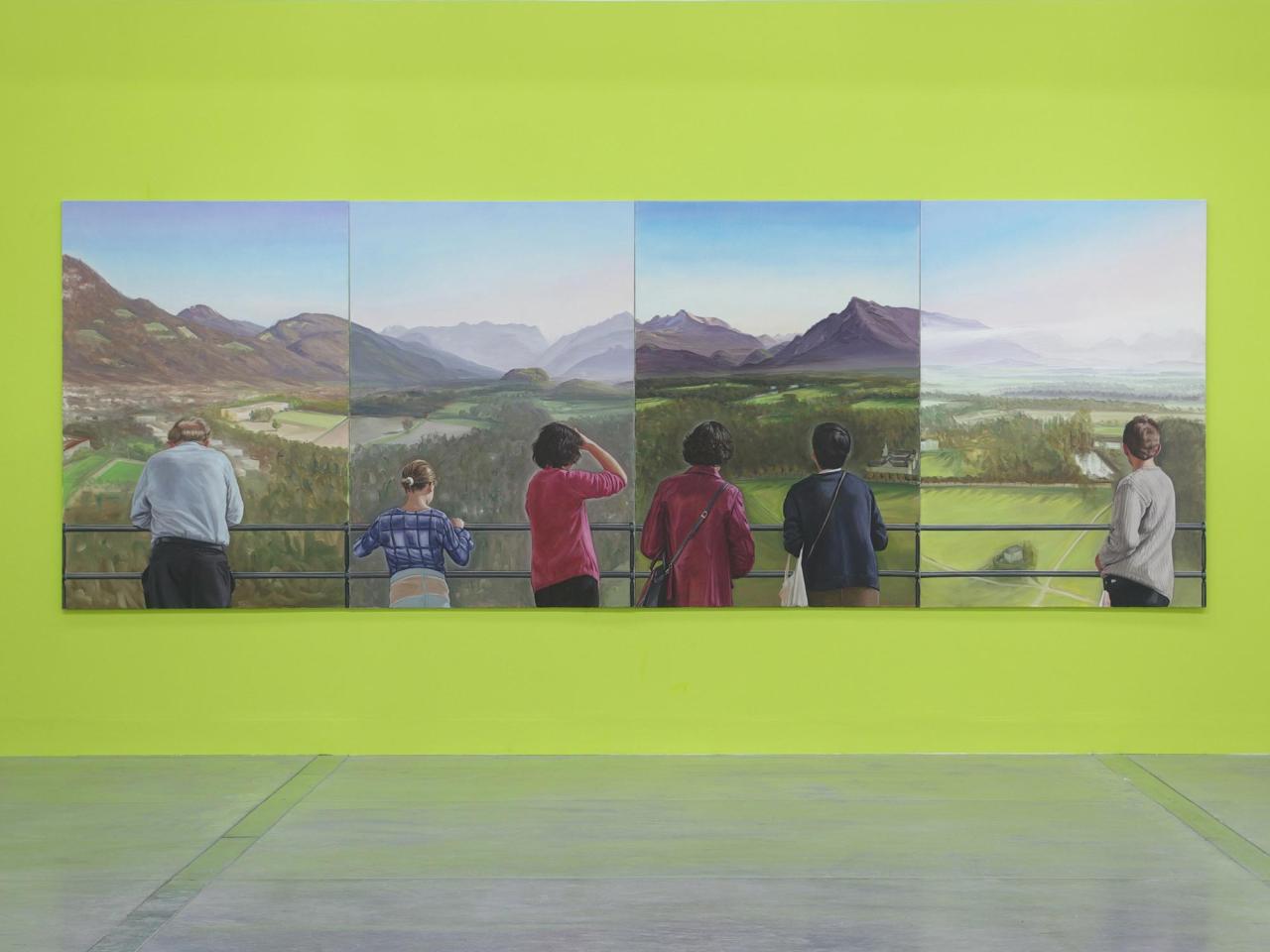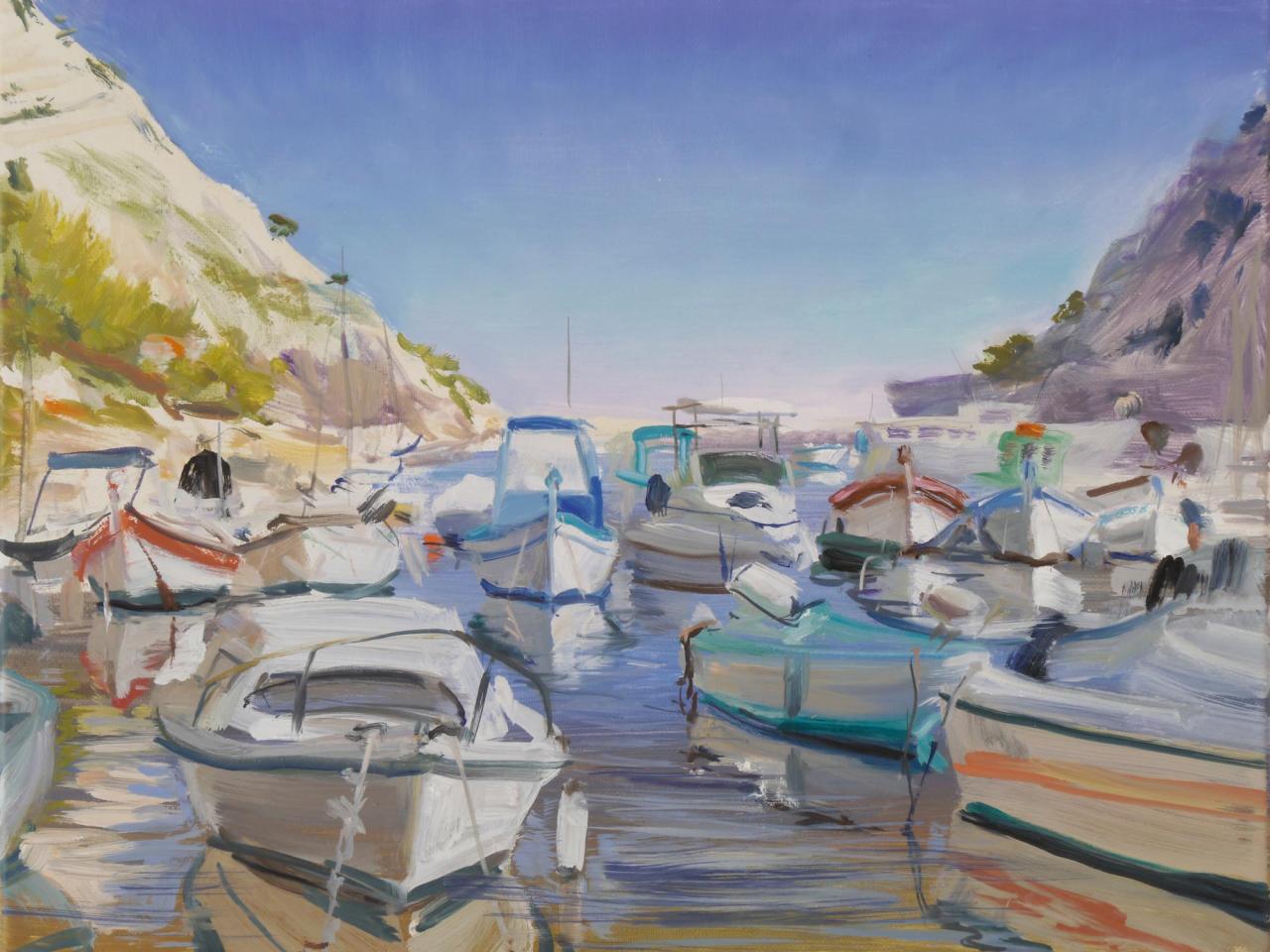Anke Doberauer
Born in 1962
Lives and works in Marseille and Munich


The Metaphysical Comes to Light Through Colour
anke doberauer in conversation with the writer peter stamm
peter stamm: When we first got to know each other seven years ago, you primarily painted male nudes. Today most of your models are dressed and you paint a large number of figural groups. Can this development be described as one from the private to the socially oriented?
anke doberauer: Seven years! That's the title of your latest novel... But to answer your question: what you say is correct and at the same time it is not correct. In the 1980s and '90s I primarily painted men; meanwhile I also paint figural groups. But the men were not nudes in the strict sense. Often only one part of their bodies was exposed, for example a shoulder or navel. They are usually dressed. At the same time, however, they do apparently expose themselves in some way, because I have very often been described as “a painter of male nudes”.
These paintings were never private. The concern, rather, is with intimacy. JeanChristophe Ammann once said that the private belongs to each individual alone, the intimate to everyone. The paintings focus on changes in the relationships between men and women, because they show a new, female perspective on man. In that sense they have a political dimension. The art scene is very conservative in this respect, because depictions of naked women are still as socially acceptable as ever, even though nothing new has happened in this genre in five hundred years. It's as if the gender discussion was steering clear of contemporary art. Since the turn of the millennium, however, I have been painting fewer men. This change undoubtedly has something to do with my age. In the beginning my models were my age, later somewhat younger, then much older. But the depiction of physical deterioration is not a topic I'm particularly interested in, at least not for the time being.
The main concern of my work is formal problems. For example the physical presence of the figure depicted, the colour, the light, the entire painting. Form plays the same role in my work as it does in abstract painting. Access to the content is gained only by way of the form. In the case of the paintings of men, very high demands were placed on the beholders' emotions, and that apparently distracted them from my work's constructive basis much more than is the case with my new, largescale multifigural compositions. My latest painting, Die Badenden (The Bathers), is more complex with regard to form as well as content, but also more political than its predecessors. It depicts almost exclusively children of primarily dark Mediterranean skin colour and with a lot of inflatable, diaphanously glowing coloured plastic toys. The topic is arthistorically charged to the brink; Cezanne's bathers are considered the beginning of modern art. That appealed to me.
Why are you interested in the process of portraiture? And what do you find interesting about the phenomenon of nakedness? For academically trained painters, naked people are banal; they're “nude models.” The act of undressing, however, is considered obscene and takes place behind a room divider. Apparently it's the presence of the model in front of the artist in the moment of working that arouses your curiosity. But curiosity about what? What do you want to find out?